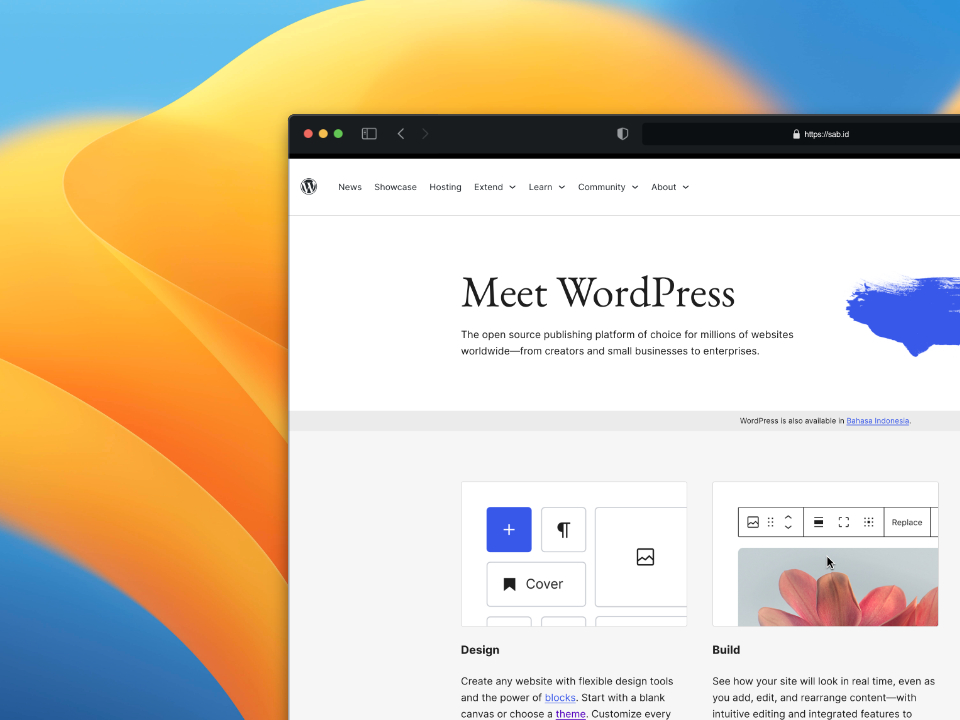Website pre-launch – Before launching any website, it is crucial to thoroughly test every aspect of the design to ensure it functions as intended. Rushing and taking shortcuts during the development process can lead to a poor user experience and can cause issues that may be difficult to fix once the website goes live.
At our agency, we understand the importance of testing and make sure to thoroughly test everything before launching any website, whether it's a new build or small changes to an existing site.
In this article guide, we will go over some of the key factors that need to be tested before setting your website live, including functionality, design, and user experience. By taking the time to test all these areas, we can ensure that your website will be successful and provide an optimal experience for your users.
Google Analytics
Setting up Google Analytics before launching your website can be very beneficial. Google Analytics is a free web analytics service offered by Google that tracks and reports website traffic. By setting it up before launching your website, you can start collecting data on your visitors right away, which can help you make informed decisions about your website's design, content, and overall strategy.
Once you set it up, you'll be able to track important metrics like the number of visitors to your website, the pages they visit, the amount of time they spend on your site, and their geographic location.
You can also track user behavior on your website, such as the number of clicks on specific links, the number of form submissions, and the number of downloads. This data can help you understand how your visitors are interacting with your website and how you can improve their experience.
Additionally, Google Analytics can help you track the performance of your marketing campaigns, such as how many visitors came to your website from a particular ad or social media post. This can help you evaluate the effectiveness of your marketing efforts and make adjustments as needed.
In summary, setting up Google Analytics before launching your website can be very beneficial. It allows you to track and analyze data on your visitors and how they interact with your website, which can help you make informed decisions about your website's design, content, and overall strategy. And also it's a great tool for evaluating the effectiveness of your marketing campaigns.
Website pre-launch: Content
There's nothing more frustrating than having a typo or error on your site. Not only does it detract from the professional image of your business, but it can also be confusing for your visitors.
That's why it's so important to proofread everything before your website goes live. This includes not just the main text and headlines, but also your images, links, and any other elements on your site.
Consider having a few people proofread your website for you, as multiple sets of eyes can often catch errors that you might miss. Additionally, use tools like Grammarly or Hemingway to check for grammar and readability errors.
Proofreading is a crucial step in the website development process, and taking the time to do it properly can make all the difference in the success of your website. Don't let a small typo be the reason people leave your website, proofread everything!
Readability
The readability of your website is just as important as the content itself. When visitors come to your website, they should be able to easily understand the message you're trying to convey. That's why it's important to ensure that your copy is clear, concise, and easy to read.
Start by checking the font you've chosen, and ensure that it's easy to read and not too small or too fancy. Use a simple, easy-to-read font that is comfortable for the eyes. Headlines are another important aspect of readability. Make sure they are short, to the point, and easy to understand. Headlines should be attention-grabbing, but also informative and relevant.
Also, consider the structure of your content, and use short paragraphs, bullet points, and headings to break up your text and make it more readable. Use images, infographics, and videos to supplement your text and make it more engaging.
Remember, the goal of your website is to communicate with your visitors, so make sure that your message is clear and easy to understand. Good readability can make all the difference in keeping visitors on your website and making them take the desired action.
Images
Images, videos, and animated SVGs are all important elements of a website, and it's crucial to make sure that they are optimized and loaded correctly before launch.
When it comes to images, make sure they are compressed and optimized for the web. This will help them load quickly, which is crucial for keeping visitors to your website. Also, ensure that all images are properly sized and scaled, so they don't take up too much space and slow down your website.
Videos should also be optimized for the web and should be tested to ensure that they load correctly and play smoothly on all devices. Also, ensure that you have a fallback option for users who have slow internet speeds or limited data plans.
Animated SVGs are also a great way to add visual interest to your website, but make sure that you have checked and tested them before launch. Also, make sure that the animations are smooth and not too distracting.
In general, it's important to check that your visuals are optimized and loading correctly, and take the time to test your website on different devices and browsers to ensure that they are working as intended. Remember, visuals play a big role in keeping visitors engaged, so make sure that they are working correctly and providing a good user experience.
Read Also: You Should be Aware that Micro-goals are Essential for Success
XML Sitemap
An XML sitemap can be an important part of a website, especially for pre-launch. An XML sitemap is a file that lists all the URLs of your website, along with other metadata such as the date of the last modification and the priority of each URL. This file is then submitted to search engines, such as Google, to help them understand the structure of your website and to discover new pages on your site.
Submitting an XML sitemap to search engines can help them to index your website more quickly and efficiently. It also helps search engines crawl and understand the relationship between different pages on your website. This can lead to better visibility and ranking in search results, and ultimately drive more traffic to your website.
Additionally, an XML sitemap can be a useful tool for website owners to keep track of the URLs on their websites and to identify and fix any broken links or missing pages. It's also helpful for website owners to keep track of the URLs that are removed or changed on their websites.
Having an XML sitemap can be beneficial for pre-launch websites. It's a simple and efficient way to help search engines discover and understand your website, and can lead to better visibility and ranking in search results. It also can be useful for website owners to keep track of the URLs on their websites and to identify and fix any broken links or missing pages.
Responsiveness
Responsiveness is critical for today's websites. With the increasing number of people accessing the internet on their mobile devices, it's essential to ensure that your website is optimized for mobiles and tablets. This means that your website should be able to adjust its layout and functionality to fit the screen size and resolution of different devices.
That's why it's so important to test your website on different devices and browsers before launch. This will help you identify and fix any issues that may arise when your website is viewed on different devices.
You should test your website on different screen sizes and resolutions, including popular mobile devices such as smartphones and tablets. This will ensure that your website is accessible and user-friendly for all visitors, regardless of the device they are using to access your website.
Also, consider using responsive design frameworks such as Bootstrap or Foundation, which make it easy to create responsive websites that adapt to different screen sizes.
In short, Responsiveness is a crucial aspect of website design and development. Make sure that your website is designed to work correctly on different devices, and test it thoroughly before launch. This will ensure that your website is accessible and user-friendly for all visitors, regardless of the device they are using.
Links
Broken links can be a major problem for any website. They can be frustrating for visitors, and they can also hurt your website's search engine rankings. That's why it's so important to make sure you don't have any broken links on your website when you launch.
One way to check for broken links is to manually click on each link on your website and ensure that it takes the user to the intended location. This can be time-consuming, especially if you have a lot of links on your website.
Another way is to use link checker tools that automatically scan your website for broken links. These tools can save you a lot of time and effort, and they can also help you identify and fix broken links that you might have missed.
It's also important to check internal links (links that point within your website) and external links (links that point to other websites) to ensure that they are working correctly and pointing to the right destination. It's also a good practice to regularly check the links on your website after launch to ensure that they are still working.
In short, broken links can be a major problem for any website, make sure you check that each link on your website is taking the user to the intended location before launching your website. This will help you ensure that your website is accessible and user-friendly for all visitors.
Do you want to increase your website's visitors, traffic, and best conversations by more than 80%? No need to worry! We can assist with A-Z activation to optimize your website's business more successfully. Visit our main website here and contact us using this form.
Read Also: Website Search Engine Optimization Checklist



